Early Sewn Work. 1975–79 Click on images to view projects. |

|
 |

|

|
 |
||||

|
 |
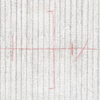
|

|
 |
||||

|
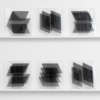 |

|

|
 |
||||

|
 |

|

|
 |
||||
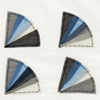 |
 |
 |
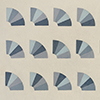 |
 |
||||
 |
 |
 |
 |
 |
||||
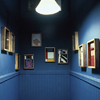 |
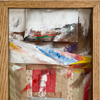 |
 |
 |
 |
||||
 |
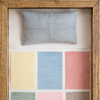 |
 |
||||||
I would like to say that my early work in thread had a feminist impetus, but when I began sewing in 1972, feminist art discourse was in a nascent stage, and I worked on my own with little knowledge of what other women were doing. My projects from that time are formal explorations of line released from its support and embodied as thread. My studies with Ad Reinhardt had deeply influenced my work. For Ad, every element of an artwork had to be necessary and accounted for, and limited possibilities could produce infinite variety. Trained as a painter, I was interested in expanding the parameters of what constitutes a work of art. My earliest untitled thread pieces were attempts to add a different material to the language of abstract painting.
These were followed by Parallelograms, an experiment in the possibilities of layering four pieces of organdy fabric. When I arrived at a combination I liked, I stitched the edges of the pieces together with purple silk thread. This reminded me of the process by which quilts are designed. I made Jack-in-the-Box, a “useless” transparent framed quilt, to explore the role of pattern and design in both craft and abstract painting. Funeral for the Grid, part of an exhibition in bus-terminal windows on Ninth Avenue in Manhattan, was a postmortem for that period. I installed The Artists Bedroom in a broom closet at P.S.1 Contemporary Art Center in Long Island City, Queens, New York. It was a bedchamber hung with little beds in frames, complete with pillows and coverlets. In the coverlets, each based on a different modern artist’s signature work, I explored my inherited artistic influences—an early use of what would later be called “appropriation” in the service of a psychological inquiry into the anxiety of influence.
|